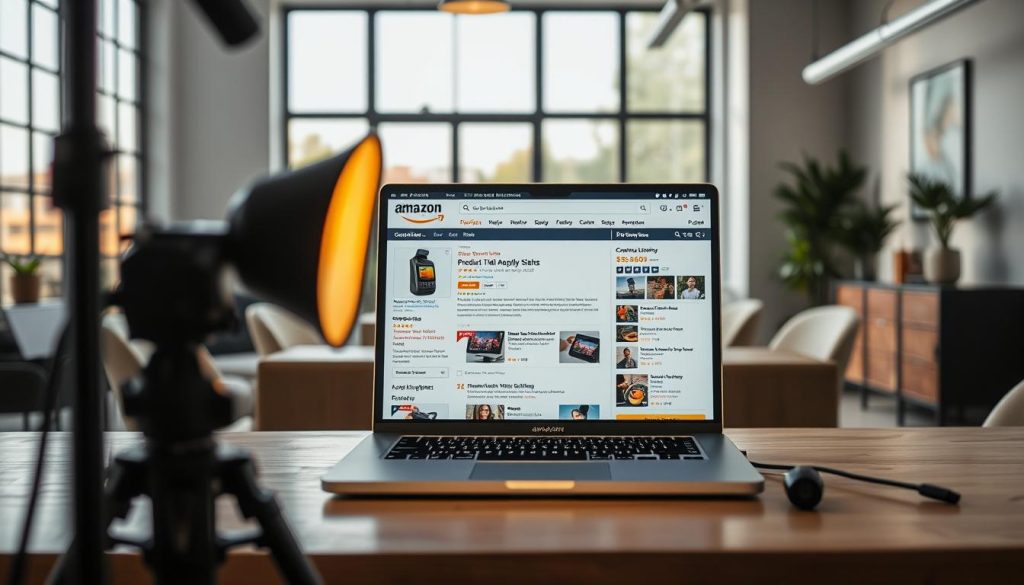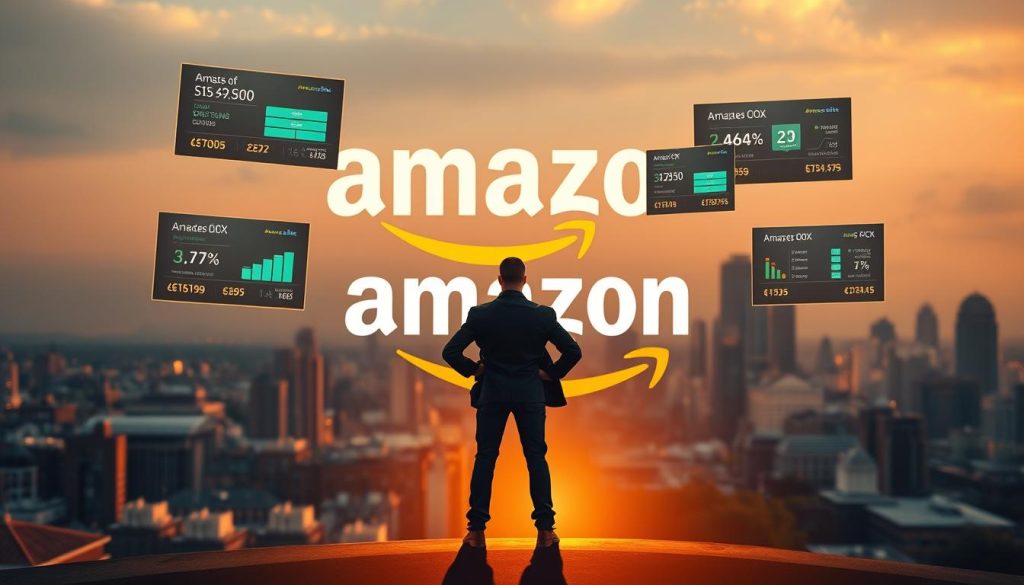Reselling books on Amazon has become a popular way for individuals to earn extra income. By purchasing books at lower prices and selling them at higher prices, many sellers have found success in this growing market. The potential for profit is significant, with some sellers earning up to $20 or more per book after fees.
Understanding Amazon’s fee structure is crucial for maximizing profits. Fees typically range from 15% to 30% of the sale price, depending on the type of account and the category of the book. This means that pricing your books correctly is essential to ensure a decent profit margin.
Success in reselling books on Amazon relies heavily on research and analysis. It’s not just about luck; it’s about understanding what products are in demand and how to source them effectively. With the right approach, anyone can turn this into a profitable venture.
Key Takeaways
- Understanding Amazon’s fee structure is crucial for profit calculations.
- Focus on sourcing high-demand books to maximize earnings.
- Research and analysis are key to successful reselling.
- Pricing strategies should account for all fees and target profit margins.
- Continuous learning and adaptation are essential in this competitive market.
Understanding the Amazon Reselling Landscape
Amazon reselling offers a dynamic marketplace for sellers to connect with millions of customers. This platform allows individuals to buy and sell products, creating opportunities for profit.
What is Amazon Reselling?
Amazon reselling involves purchasing products and selling them on Amazon. Sellers can use various strategies, such as retail arbitrage or wholesale, to source inventory.
Benefits and Key Considerations
- Access to a vast marketplace with millions of potential customers.
- Streamlined fulfillment options, like FBA, for efficient order handling.
- Understanding account types (Individual vs. Professional) and their requirements is crucial.
- Positive customer reviews build trust and boost sales.
Success in this landscape requires understanding marketplace dynamics and leveraging tools to track performance. Adapting strategies based on data helps sellers stay competitive.
How to Make Money Reselling on Amazon
Understanding the financial aspects of reselling is key to building a profitable business. This section breaks down the process of calculating profits and highlights successful strategies used by top sellers.
Profit Calculations and Metrics
To determine your profit, subtract all costs from the sale price. This includes purchase cost, Amazon fees, and any shipping expenses. For example, if you buy a book for $20 and sell it for $30, but incur $5 in fees, your profit is $5.
Successful Examples and Case Studies
One seller found success by focusing on textbooks during the school season. They bought a book for $15 and sold it for $45, earning a $25 profit after fees. Another seller used data tools to identify high-demand books, increasing their sales by 40%.
Researching Profitable Books and Market Trends
Identifying the right books to sell is crucial for success. By leveraging historical sales data and current trends, you can uncover profitable opportunities.
Analyzing Sales Data and Customer Demand
Retail arbitrage is a popular strategy where sellers buy books at lower prices and sell them for higher amounts. This method relies on timing and understanding customer preferences. For example, buying textbooks during the summer when demand is low and selling them in the fall can yield significant profits.
Using tools to analyze sales data helps you identify which books are in demand. This approach ensures you focus on products with consistent sales history and higher profit margins.
Identifying Niche Opportunities
Arbitrage opportunities often lie in niche markets, such as rare books or specific genres. By studying marketplace trends, you can spot gaps in supply and demand. For instance, some sellers specialize in non-fiction or children’s books, where demand is steady.
Timing plays a key role in maximizing profits. Seasonal demand, such as textbooks during back-to-school periods, can significantly impact your earnings. By staying ahead of these trends, you can make informed decisions that boost your profit margins.
Setting Up Your Amazon Seller Account
Starting your journey as an Amazon seller begins with setting up your account. This step is crucial for a smooth and profitable experience. Amazon offers two primary account options to suit different selling needs.
Professional vs. Individual Account Options
Choosing the right account type is essential. A Professional account is ideal for high-volume sellers, offering features like bulk listing and API access for a monthly fee. On the other hand, an Individual account is better for casual sellers, charging a per-sale fee without monthly costs. Understanding these differences helps you pick the option that aligns with your business goals.
Essential Documentation and Requirements
To complete your account setup, you’ll need a government-issued ID, tax information, and a valid credit card. These documents ensure compliance with Amazon’s policies. Utilizing tools like inventory management software can help optimize your account and strategy, keeping your operations efficient and aligned with market trends.
Sourcing Quality Inventory for Reselling
Finding the right products is key to success in reselling. This section explores effective strategies for sourcing inventory that sells well and brings in profits.
Retail Arbitrage and Clearance Finds
Retail arbitrage is a popular method where sellers buy products at lower prices from retail stores and sell them for higher prices online. Keep an eye out for clearance sections and sales events, as these can be goldmines for discounted items. For example, buying books during holiday sales and selling them during peak demand periods can boost your margins.
Wholesale Suppliers and Bulk Purchasing
Wholesale suppliers and manufacturers offer another way to secure quality inventory. By buying in bulk, you can negotiate better prices and ensure a steady supply of products. This method is especially useful for sellers who want to focus on specific categories or brands with consistent demand.
When sourcing from wholesalers, make sure to research their reputation and the quality of their products. High-quality items from recognized brands not only attract more customers but also build trust and positive reviews for your store.
Fulfillment by Amazon (FBA) can simplify storage and shipping logistics, but it’s important to understand how it impacts your inventory management. Evaluating the condition and brand reputation of your products helps maintain profitability and customer satisfaction.
- Explore retail arbitrage and clearance sales for discounted finds.
- Consider wholesale suppliers for bulk purchasing and better pricing.
- Focus on categories and brands that build customer trust.
- Understand how FBA affects inventory storage and shipping.
- Evaluate inventory quality to maintain profit margins.
Optimizing Your Product Listings on Amazon
Creating compelling product listings is essential for standing out in a competitive market. Well-optimized listings can significantly boost your store’s visibility and conversion rates.
Crafting Keyword-Rich Titles and Descriptions
Start with a clear, keyword-rich title that includes relevant terms your target market is searching for. Use bullet points to highlight key features and benefits. Keep your descriptions detailed but concise, ensuring they appeal to your target audience while incorporating important keywords naturally.

Leveraging High-Quality Images and Bullet Points
High-quality images are crucial for grabbing attention. Use clear, well-lit photos that showcase the product from multiple angles. Bullet points help customers quickly understand the product’s value. Analyze your competition and adjust your strategies to stay ahead in the market.
Optimizing your store’s appearance with a professional layout can drive sales. By focusing on these elements, you can position your products for success and increase your chances of winning the buy box.
Maximizing Profits with Fulfillment by Amazon (FBA)
Fulfillment by Amazon (FBA) is a game-changer for sellers looking to streamline their business operations. By leveraging Amazon’s logistics network, you can focus more on growing your business and less on handling orders.
How FBA Streamlines Order Fulfillment
FBA simplifies the order fulfillment process by handling storage, packaging, and shipping. This service allows you to store your inventory in Amazon’s warehouses, ensuring faster delivery times and improved customer satisfaction. With FBA, your products become eligible for Prime shipping, which can significantly boost your sales.
Additionally, FBA helps build trust with customers. Amazon handles customer service and returns, reducing the burden on sellers and enhancing the overall shopping experience.
Managing Shipping and Storage Fees
While FBA offers many benefits, it’s important to manage shipping and storage fees to protect your profit margins. Here are some strategies to help you minimize costs:
- Optimize your inventory levels to avoid excess storage fees.
- Consider the size and weight of your products when calculating shipping costs.
- Use FBA’s tools to monitor and adjust your inventory strategy regularly.
By balancing these fees with the benefits of FBA, you can maintain healthy profit margins while growing your business. Implementing clearance strategies for slow-moving inventory can also help improve cash flow and reduce storage costs.
Winning the Buy Box and Implementing Pricing Strategies
Securing the Buy Box is a powerful way to boost your sales on Amazon. This coveted spot is the “Add to Cart” button that appears on product pages, making it easier for customers to purchase from you. Winning the Buy Box is crucial because it increases visibility and trust, leading to higher conversion rates.
To win the Buy Box, focus on competitive pricing while ensuring profitability. Research your competitors and set prices that are attractive yet sustainable. Keep your inventory well-stocked to meet demand consistently.
Effective inventory management is key. Use tools to track your stock levels and ensure you never run out of popular items. This not only helps in winning the Buy Box but also maintains customer satisfaction.
Stay updated with market trends and customer preferences through continuous research. Adjust your pricing and inventory based on this data to stay competitive. High-quality products and accurate descriptions also play a significant role in securing the Buy Box.
By combining competitive pricing, efficient inventory management, and thorough research, you can create listings that stand out. These strategies will help you win the Buy Box and grow your business effectively.

Utilizing Tools and Analytics for Business Growth
Effective use of tools and analytics is vital for scaling your reselling business. These resources help you track performance, understand trends, and make informed decisions.
Tracking Profit Margins with Calculators and Extensions
To maximize profits, you need tools that help monitor costs and demand. Profit calculators and browser extensions are essential for evaluating expenses and optimizing prices.
- Use profit calculators to assess costs and set competitive prices, ensuring healthy margins.
- Browse extensions that track demand in real-time, helping you identify trending products.
Selecting the right analytics tools is crucial. They provide insights into sales data, customer behavior, and market trends, enabling better decision-making.
Regular demand analysis helps adjust inventory and pricing strategies. By staying informed about market shifts, you can capitalize on opportunities and avoid overspending.
Investing in the right tools and using data effectively can drive growth and profitability in your reselling business.
Conclusion
Success in the Amazon marketplace requires a combination of smart strategies and consistent effort. By focusing on quality inventory, proper account setup, and effective pricing, you can build a strong foundation for your business. Leveraging Amazon’s features and data-driven tools will help you stay ahead of the competition and make informed decisions.
Bulk purchasing and monitoring key numbers are essential for long-term success. Keep track of your sales, expenses, and customer feedback to refine your approach. With the right strategies and a commitment to learning, you can turn your reselling venture into a thriving business. Start applying these tips today and watch your profits grow in the dynamic Amazon marketplace.




